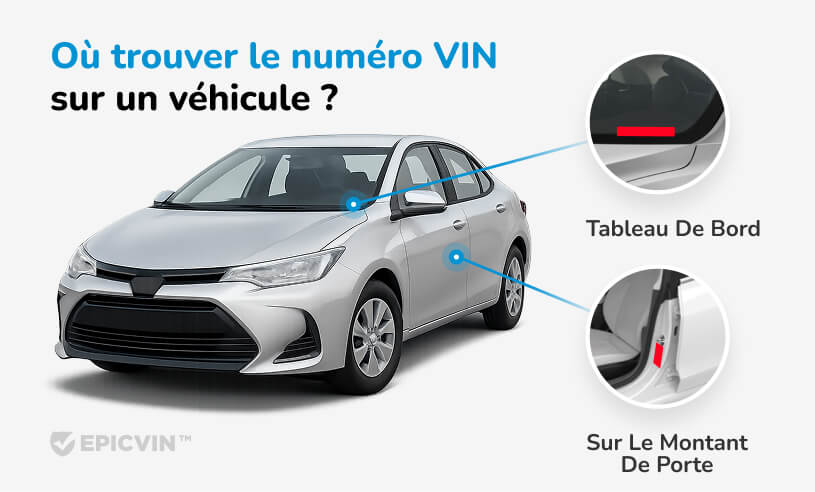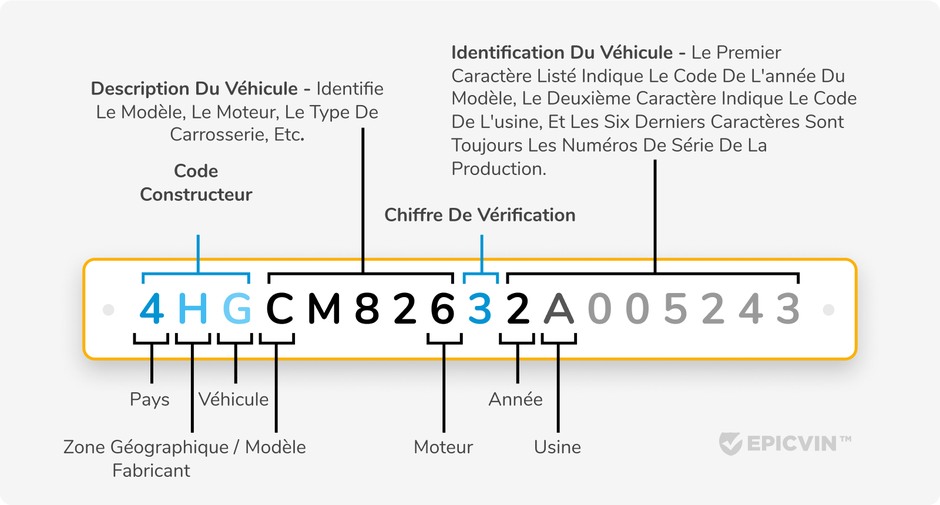
Décodage du numéro d'identification du véhicule (VIN)
Dans cet article, nous avons décrit en détail ce qu'est le code VIN.

Décodeur International gratuit ! 🚗 Consultez les spécifications, la fiche technique, les rappels et l'historique de base - sans inscription. 🛡️✅ Besoin d'informations sur les accidents, le kilométrage, le titre ? Passez à la version premium en un clic.
À la recherche du VIN ?
Voici où vous le trouverez :

Depuis 1981, chaque véhicule fabriqué respecte les normes de l'Institut ISO avec un numéro d'identification unique à 17 caractères. Notre International décodeur VIN aide à identifier instantanément les spécifications, le statut des rappels et l'historique avec des informations détaillées.
Decoding your International's vehicle identification number takes just four simple steps:

Votre camion ou véhicule International affiche le numero vin International à plusieurs emplacements standard :
| Risque clé | Impact sur les acheteurs | Mesures d'atténuation |
|---|---|---|
| Risque de vol | ~42 000 vols d'International en 2024 aux É.-U. | Effectuer une vérification VIN de vol avant achat |
| Rappels de sécurité non réparés | ~18 % des International rappelés restent non réparés | Vérifier numéro châssis gratuit via VIN |
| Dépréciation dans le temps | Perte moyenne sur 5 ans ~47 % valeur de revente pour International premium | Comparer les données historiques de revente |
| Fraude compteur kilométrique | 1,9 % des ventes International d'occasion montrent des manipulations | Recouper le compteur avec le kilométrage DMV |
| Historique inondation ou épave caché | Plus de 12 000 International signalés inondation/épave aux enchères 2023 | Utiliser l'archive NMVTIS et photos enchères d'EpicVIN |
Réduire les risques : Recherche VIN dans les bases officielles. Comparez les relevés kilométriques. Obtenez des rapports d'historique complets avant achat.
| Problème | Modèles affectés, symptômes, coût moyen de réparation |
|---|---|
| Panne de transmission | Berlines et SUV 2012-2016, passages difficiles vers 90k miles, 4 200-6 000 $ |
| Étirement chaîne de distribution | Moteurs turbo 2008-2014, cliquetis démarrages à froid 70k-100k miles, 2 500-3 500 $ |
| Problèmes électriques/iDrive | Unités infodivertissement 2015-2019, écran figé ou pas d'audio, 1 200-1 800 $ |

Chaque caractère de la séquence unique de votre véhicule raconte une histoire spécifique avec des informations importantes.
Il y a d'autres détails que les propriétaires et acheteurs International devraient connaître :
Voici un exemple de comment notre International décodeur VIN interprète une séquence échantillon (3HSCUAPR0AN272771) :
| Symboles | Échantillon | Ce que cela révèle |
|---|---|---|
| 1 | 3 | États-Unis comme pays d'origine |
| 2 | H | International Harvester Company comme constructeur |
| 3 | S | Type de véhicule camion commercial |
| 4-8 | CUAPR | Type moteur, configuration châssis et spécifications modèle |
| 9 | 0 | Chiffre de contrôle pour validation |
| 10 | A | Année-modèle 2010 |
| 11 | N | Code emplacement usine d'assemblage |
| 12-17 | 272771 | Numéro de série individuel du véhicule |
Année 2007
Marque International
Modèle L9427
Type de carburant Diesel
Moteur 15L Cummins Signature 600, ISX, AHD
Fabriqué en CANADA
Notre décodeur VIN International révèle des spécifications complètes et des détails importants sur le VIN de tout camion ou véhicule International, avec des informations spécifiques :
EpicVIN archive les photos d'enchères par VIN, créant un historique visuel permanent de chaque International.— Alex Black, CMO, EpicVIN
Vérifiez le tableau de bord, montant porte conducteur, compartiment moteur ou documents titre pour le numéro châssis.
Les positions 4-8 contiennent les spécifications moteur que notre système décodeur traduit automatiquement.
La section descriptive véhicule inclut les codes transmission que notre base de données recoupe avec les spécifications constructeur.
Oui, les trois premiers chiffres et codes carrosserie identifient les applications et configurations spécifiques.
Les positions VIN contiennent les informations transmission, incluant les ratios ponts pour la plupart des modèles camions.
Entrez votre numéro VIN dans notre système de recherche vin pour découvrir instantanément tout rappel ouvert.
Notre vérification vin de International compare votre saisie aux données DMV pour une identification correcte.
Les erreurs de saisie ou échanges châssis peuvent causer des divergences nécessitant vérification via notre site et contact des parties intéressées pour clarification.
Oui, les trois premiers caractères dans les positions 4-8 spécifient les dimensions empattement pour véhicules commerciaux.
Notre vérifier numéro châssis gratuit identifie les niveaux certification EPA et équipements émissions depuis les séquences codes constructeur.
Découvrez des conseils d'experts, des astuces et des informations sur l'achat et l'entretien de véhicules d'occasion.

Dans cet article, nous avons décrit en détail ce qu'est le code VIN.

Lisez cet article pour découvrir comment protéger la voiture des rongeurs

Si votre budget est limité, vous pouvez envisager d'acheter une voiture d'occa...